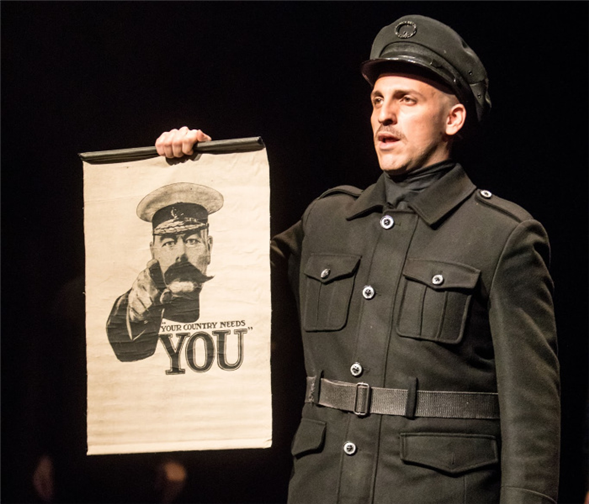Translate Page

Revisiting a magical moment of amity during World War I through stories and songs
---
In the early 2000s, playwright and director Peter Rothstein started working on a show about the Christmas Truce of 1914, an unofficial ceasefire that brought troops from opposing sides of World War I together on December 24 for a night of caroling and companionship. But he soon hit a roadblock. "The climax of this particular story was the lack of conflict, which doesn't make for great drama," Rothstein says with a laugh. So he decided to travel to the Western Front to try to find the key to theatricalizing this compelling story of peace.
He perused archives and military museums in London, Paris, Dresden, Hamburg, Berlin and Brussels, and finally found what he was looking for at the In Flanders' Fields Museum in Ypres, Belgium, where a curator talked about putting a human face on war.
That's when Rothstein realized that he wanted the piece to "celebrate all these men whose names have been denied their place in history," he says. "They were the lowest of the ranks, and they defied authorities from above and took peace into their own hands." He decided to honor these unsung WWI heroes by interweaving excerpts from their letters and journals with trench songs and Christmas tunes.
Rothstein, who is the artistic director of Minneapolis' Theater Latté Da, originally premiered All Is Calm: The Christmas Truce of 1914 as a live radio play on Minnesota Public Radio in 2007. The next year, he staged it at his theatre, and it's been touring the country ever since. Its current run at the Sheen Center marks its New York debut.
In All Is Calm, ten men play multiple roles on both sides, and also serve as an a cappella choir. In between the songs, they share firsthand accounts of that life-affirming evening over a century ago.
"All of the actors sing in a minimum of four different languages, and each of them has a handful of dialects," says Rothstein, admitting that made casting quite difficult. Another challenge was figuring out how the performers would find their respective pitches for each number. The solution: strategically placed tuning forks. "Only a fraction of the audience really knows how difficult this is, how they tune and retune throughout the evening," the director says.
Rothstein worked with musical arrangers Erick Lichte and Timothy C. Takach to curate the set list and build the narrative into the numbers. "I wanted to make it as secular and inclusive as possible," he says, "but I also knew it would be rich being able to include Christmas songs from all those countries." Moments of shared harmony transform into dissonance, aurally conjuring the harshness of life in the trenches. For example, in Silent Night, one voice is joined by two others, all three singing in different languages and key signatures until they come together in unison. It's a powerful evocation of fellowship. Sadly, the war dragged on for four more devastating and bloody years. But the Christmas Truce still stands as an inspirational event.
"I don't think it would have happened were it not for song, were it not for music," Rothstein says. "It built a relationship between the Allied and German forces. As they sat there, just yards apart, they began to hold these impromptu concerts back and forth. With music being an international language, they really built a camaraderie through this exchange."
---
TDF MEMBERS: At press time, discount tickets were available for All Is Calm. Go here to browse our current offers.
Allison Considine is a staff writer at American Theatre magazine. Follow her at @theatric_ally. Follow TDF at @TDFNYC.
Top image: Rodolfo Nieto in All Is Calm: The Christmas Truce of 1914. Photos by Dan Norman.